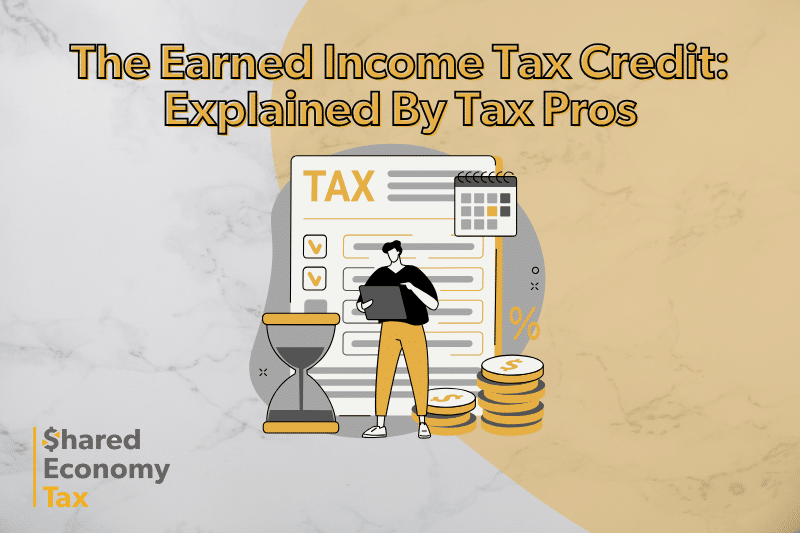
The earned income tax credit (EITC) offers big savings to wage-earners with dependents, but many taxpayers inadvertently overlook this valuable credit. In this article, I’ll provide an overview of the Earned Income Tax Credit and explain the conditions for qualifying.
What Is The Earned Income Tax Credit?
The earned income tax credit, also known as the EITC reduces taxes for low to moderate-income workers. This credit is available to all regularly employed taxpayers who fit the IRS criteria, even if they do not owe any taxes.
What is a Refundable Tax Credit?
The EITC is a refundable tax credit, and it carries some the EITC directly reduces your tax obligations, unlike tax deductions, which are applied to your taxable income. The IRS will refund the difference to you If the amount of the EITC is greater than the taxes you owe. Even if you owe no taxes at all, you can still receive the full value of the credit as a refund.

How Much Is Earned Income Credit
The amount of the EICT ranges from $632 to $7,830 as of 2024. The amount you receive depends on several factors; your filing status, your earned income, and the number of dependents you have. You don’t have to have dependents in order to qualify, however, the more dependents you have, the higher the tax credit.
Who Qualifies for Earned Income Credit
When it comes to tax credits, each tax credit has certain criteria that must be met in order to be eligible for the tax credit. In the instance of the EICT, the requirements are as follows:
- You must have an earned income of at least $1. Pensions and unemployment do not count.
- Nobody can claim you as a dependent.
- You must be between the ages of 25 and 65.
- Investment income can not be greater than $3,600.
- You must have resided in the US for more than half of the year.
- Married couples filing separately, cannot claim the tax credit.
- If you file form 2555 (Foreign Earned Income) or form 2555 EZ (Foreign Earned Income Exclusion) you are not eligible for the tax credit.
If you’re not sure whether you qualify, the IRS has a special tool to help you determine your eligibility. It’s called the EITC Assistant, and you can access it on their website 100% FREE using this link.
How Do I Claim EITC?
To claim the EITC you will need to gather all of the relevant information. This includes income statements like W-2’s and 1099’s, social security numbers of dependents, and birth dates of dependents. You will need to determine your filing status and calculate your earned income before determining your eligibility for the earned income tax credit. Then, you must file Schedule EIC along with your 1040 to claim the credit on your tax return.
Remember to double-check all your information for accuracy. Any mistakes may cause your credit to be denied. Some common pitfalls to watch out for include:
- Claiming a child who does not meet the qualifying age and relationship requirements.
- More than one person claiming the child.
- Social security number or name mismatches.
- Filing as a single or head of household when married.
- Over or underreporting of income.
Falsely claiming EITC can incur IRS actions, including audits, penalties, and interest. Take your time and make sure all of the information is accurate.
Claiming EITC on Amended Returns
If you were eligible for the EITC in previous years but failed to claim it, you can file amended return to claim the savings after the fact. However, you only have three years from the original filing deadline to file an amended return. If you think you may have missed out on EITC savings in previous years, don’t hesitate to discuss an amended return with your tax pro.
Get Help With Your Taxes
If you’re not sure whether you qualify for the earned income tax credit, you don’t have to go it alone. A professional tax advisor can determine your eligibility and assure that you’re getting the best possible deal on your taxes. Schedule a one-on-one strategy session with a Shared Economy Tax pro today to get a personalized take on your tax situation, or sign up for our complimentary newsletter for more tax tips.